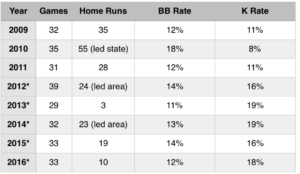A winning approach in the BBCOR era
As coaches, we have all see hitters who overachieve and underachieve their mechanics and physical abilities at the plate. We cannot, for the life of us, figure out why the kid who absolutely crushes the ball in the cage, has solid mechanics, and a quick bat hits 50 points lower than the kid who looks far less impressive in the cage, has slower hands, and questionable mechanics. If this is the case, look no further than pitch selection and plate approach.
We often hear coaches reminding players to have a proper approach at the plate, but what exactly does that mean? A good approach at the plate means different things depending on the age level you are coaching, and your goals as a team. Here’s ours:
5 hitting drills that translate practice skill to game performance
Our goal
We want our players to be able to do two main things, get on base, and hit for power. That’s a bit different than what most teams use for a philosophy, especially in the BBCOR era, but I’ve found that to be our “market inefficiency,” to steal a phrase from Money Ball.
While most teams are playing for just one run per inning we do everything offensively around generating big innings and changing the game with one swing of the bat. If you try to score one run per inning, that’s all you’ll get, and if you fail, you get none.
In fact, we have even changed the philosophy of our small game to be “small ball for big innings.” I love the romanticized premise of giving up yourself for the betterment of the team by making an out. But I think there are better ways to learn that lesson that don’t involve hurting the teams ability to score lots of runs.
How we do it
Once pitchers begin to chance speeds and locate pitches, the concept of taking a quality at bat changes quite a bit. The goal at this level is still to get a good pitch to hit, but the concept of a “good pitch” needs to be refined. The toughest idea to get across to your players is that not every fastball that is a strike is also a good pitch to hit.
For example, a 0-0 fastball on the outside corner is not a good pitch to hit. If the hitter swings at it, they will most likely get themselves out. If they take it, the they are now down 0-1. You would much rather have your hitter down 0-1 than sitting in the dugout. Similarly, unless they are a very good breaking ball hitter (which few kids under 18 are), they should lay off most curveballs with fewer than two strikes.
This might also take some getting used to as a coach. It is difficult to watch fastball hitters let fastball strikes go by early in the count. Realize that just because the it looked like a good pitch to hit from the third base coach’s box, doesn’t make it so.
Maybe the pitch was on the outside corner, or perhaps the velocity or release point wasn’t exactly what the hitter was expecting. Resist the urge to jump all over them because they let a fastball go by. Instead, discuss the pitch or at bat, and let them tell you if it was a good pitch to hit or not. Perhaps you are the one who didn't see the pitch correctly
Less than two strikes
With less than two strikes, we have our hitters concentrate on getting an “over the light tower” pitch to hit. Some people worry about using that phrase with young hitters because it may create a huge uppercut swing. If that doesn’t work for your program, here are a few others you can use:
1.) Turn the ball into a square.
2.) Show them the scene from the “The Natural” where hit hits the cover off the ball, tell them to do that.
3.) Turn the ball into an egg.
4.) Turn it into a pile of string.
5.) Knock the core out of the ball.
Some of you reading this are shocked right now, and it may seem a bit extreme, but for us, these phrases empathize a few things: 1.) Pitch selection 2.) Intent. 3.) Mechanics
You can’t hit a ball that’s at your knees on the outside corner over the light tower. You can’t take a pitch that isn’t exactly the pitch you are looking for and turn it into a pile of string. Again, you have less than two strikes on you. You have the advantage. Don’t give it back by swinging defensively at a pitcher’s pitch in a hitter’s count.
Intent and mechanics are often one and the same in our program. You can’t hit it over the light tower with a timid, meek, “put the ball in play,” “slappy,” swing down on the ball, all arms swing. You need to be athletic, you need to have an initial movement that allows your swing to develop power, and you need to use your lower half properly.
In the era before the BBCOR bat, a player used to be able to just get the barrel on the ball and hit it out of the park. This is no longer the case. Now, you have to be connected in your swing, you have to be on plane with the ball, and you have generate a huge amount of torque with your lower half and mid section.
I believe that many coaches have gone the other way with their teaching in the BBCOR era and have given up on “gorilla ball.” By us emphasizing it, we are gaining an advantage.
Free Web Clinic: A Batting Practice Plan That Gets Results
Two strike approach
It is very difficult to cover all 17 inches of home plate when a pitcher is throwing with good velocity and has the ability to change speeds and locate.
With two strikes, hitters should use the general tendency of most pitchers to their advantage. With two strikes, most pitchers will throw fastballs away and off-speed pitches. Because of this, hitters should be protecting the middle of the plate to 4 inches off the corner, depending on the umpire. If the pitcher beats us inside (they probably didn’t mean to) we tip our hat and eagerly await our next at bat.
Whether they’re hitting a fastball away, or a breaking ball, hitters have to wait longer to swing (see “Opposite Field Hitting” post). The goal with two strikes should simply be to put the ball in play, but be ready to hammer a mistake. We don’t believe in choking up with two strikes, we don’t believe in tremendously shortening or slowing down the swing. We still want to make a pitcher pay for a fastball over the middle of the plate, but now we’re just changing the focus to waiting, and looking away.
We know that this approach is going to lead to more strike outs, they’d just better not be looking strikeouts. It’s a risk reward. The risk is a few more strike outs. The reward is a higher percentage of balls put in play will be hit hard, and more will be for extra bases.
Practice good approaches
Just like any other skill, taking good at bats is a skill that needs to be practiced. Put your hitters in situations and counts during batting practice to allow them to work on their approach. It is unreasonable to ask hitters to do perform something in a game they have not practiced. Instead of simply having your hitters swing mindlessly during batting practice, make them work on pitch selection, and have them discuss their plan with you.
It is totally unfair to your players to not have them work on approach during practice, then expect them to perform it during a game.
What if you just discussed turning double plays, but never actually let them work on it? Sounds crazy right? Of course it is, but many coaches do this with hitting approach. They allow players to swing at every pitch in the cage, give them extra pitches because you threw a bad one, then you get mad when they can’t lay off bat pitches to hit in the game.
The results
As with any philosophy, the proof is in the results. We began to adopt this philosophy in 2009. Here are the results since…
* Denotes BBCOR era
Without question a lot of the results in any sport deal with the athletes you have. We have been blessed to have some very good players walk through the doors of our high school, but we have only had two Division 1 players and only four scholarship players come through our system since 2009. So we are achieving these numbers with pretty normal high school kids.
The year that probably jumps out at you is 2013. Why only 3 home runs that year? Obviously we had a team that wasn’t very physically strong. We knew that coming into the year, but we went too far in the opposite direction. We made the mistake of trying to emphasize just putting the ball in play over hitting for power since we weren’t very strong. As you see, we had no power and also produced our highest strikeout rate during that time period.
Summary
Next time your most talented hitter comes to you wondering why he is hitting .250 instead of .350, don’t fill his head with mechanical quick fixes, have a discussion with him about pitch selection and pay close attention to what pitches he is swinging in what count, and look closely at the type of swings he is putting on pitches he is swinging at in a hitters count.
During a season when there are limited practices, fixing an approach is much easier than fixing a mechanical flaw, and it may be the biggest reason for their struggles to begin with.
I realize that this exact approach is not for everyone, and every team. My hope is that this article can add a bit to your offensive philosophy, and you can take the parts of it that fit what you do with your team.
Free Web Clinic: A Batting Practice Plan That Gets Results
More from my site
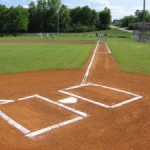 Creating challenges for practice
Creating challenges for practice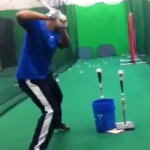 A new take on an old hitting tool
A new take on an old hitting tool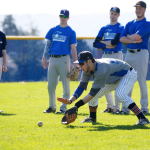 CCA Podcast 006: Maximizing Practice Efficiency Part 2
CCA Podcast 006: Maximizing Practice Efficiency Part 2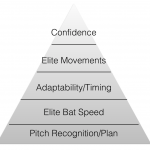 CCA Podcast 235 – The Hitting Pyramid – Adaptability and Timing
CCA Podcast 235 – The Hitting Pyramid – Adaptability and Timing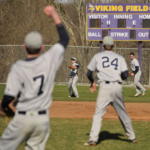 CCA Podcast 098: Creating an efficient cutoff and relay communication system
CCA Podcast 098: Creating an efficient cutoff and relay communication system CCA Podcast 239 – Maximizing the First 20 Minutes of Practice – Part 2
CCA Podcast 239 – Maximizing the First 20 Minutes of Practice – Part 2
 Posted by Kyle Nelson
Posted by Kyle Nelson- Posted in Hitting
 Sep, 03, 2016
Sep, 03, 2016 No Comments.
No Comments.
Elite members login here
Check out what’s New/Hot!
Recognizing, Diagnosing, and Fixing Common Hitting Flaws eCourse The 3 metrics we tested on Blast motion sensors this year Sneak Peek Inside an Elite Q and A The batting practice continuum Elite Member’s area table of contents 50+ “Chaos” hitting drills
5 sample Chaos hitting drills FREE
Mental Skills and Culture Building The hitting pyramid Welcome Elite Member, Trey! Ideas for a pitcher first practice 12 week bat speed improvement plan Make plans this offseason to have your team playing their best baseball at the end of the year” Top 5 hitting drills to translate practice skill to game performanceHow we used Blast Motion sensors with a team in 2019
What to do if your hitters are overmatched Welcome Elite Member, Tommy! Setting your baserunners up for success Welcome Elite Member, Mike! A consulting call with Elite Member Matt FREE Web Clinic: Developing Athletic, Consistent, Extraordinary Infielders
 Coach Kyle Nelson
Coach Kyle Nelson